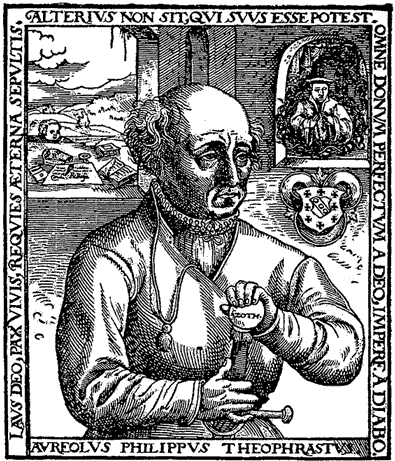
This Article From Issue
September-October 2001
Volume 89, Number 5
DOI: 10.1511/2001.34.0
Mendeleyev's Dream: The Quest for the Elements. Paul Strathern. x + 309 pp. St Martin's Press, 2000 (first U.S. edition, 2001). $23.95.
Transforming Matter: A History of Chemistry from Alchemy to the Buckyball. Trevor H. Levere. xii + 215 pp. The Johns Hopkins University Press, 2001. $42.50, cloth; $17.95, paper.
After a good dinner with one's professional colleagues, it is not a bad idea to have a question to pose that will prevent the discussion lapsing into a character assassination of the current head of department. I suggest the following: What development in chemistry moved the subject from a miscellaneous jumble of observations, heavily laced with mumbo jumbo, to an exact science? Was it the notion of the conservation of matter, or maybe Avogadro's hypothesis? Having recently read two excellent books on the history of chemistry, I would answer the question without hesitation: Chemistry came of age when its practitioners recognized the elements, materials that could not be broken down into anything simpler. Linked to John Dalton's atomic theory, it allowed them to understand chemical changes, atoms of the elements disengaging themselves and taking up with new partners.
In Trevor H. Levere's book Transforming Matter, this topic is explained with precision and clarity, alongside other aspects of the history of chemistry. In the introduction Levere tells us that the book is based on his lectures to undergraduates and graduates at the University of Toronto and is therefore most suitable for readers studying the history of chemistry as part of their education. On the other hand, the general reader with more than a passing interest in the development of modern science would find much of interest.
Paul Strathern's book Mendeleyev's Dream is aimed more at the general reader and, although he reflects on many aspects of chemical development (including the high number of misogynists among early chemists), he concentrates particularly on the "quest for the elements." Strathern is a gifted writer with a scholarly but light touch. He traces the quest from the days of alchemy to the triumphant classification of the elements in the periodic table by, among others, Dmitri Mendeleyev. Robert Boyle (1627–91), Irish by birth but educated in England, appears to have been the first to give a clear definition of an element, but progress was still slow. One of the captivating aspects of Strathern's book is that, although the theme of "the elements" is never lost, he brings the participants alive with brief biographies and anecdotes showing that even the greatest of scientists had foibles and eccentricities. For example, Boyle, like Newton, believed his religious writings to be of greater importance than his science, and he financed the translation of the Bible into Turkish and Irish to save the natives from error. He also accepted much of alchemical lore.

From Mendeleyev’s Dream.
Both Levere and Strathern recognize that chemistry really started with the alchemists, those rather sad people who believed, against all the odds, that base metals such as lead could be turned into gold; however, neither author expands on the origins and development of alchemy in Chinese culture. Although European alchemy can be dismissed largely as fraud or nonsense, some significant observations were made. Even as bizarre a character as Paracelsus (1493–1541) discovered interesting chemical transformations in the course of his alchemical and pharmaceutical studies. The fact that he was drunk for a good deal of his life tells us something about the nature of genius. The writings of Paracelsus are voluminous and arcane but contain perceptive observations of human diseases and details of effective cures. He was obviously a most unpleasant man but, judged by the standards of his time, a great scientist. He was the first to mention the metal cobalt and thus contributed to the emergence of "new elements," which made chemistry so exciting during the 18th and 19th centuries.
Medieval chemistry inherited, of course, the notion of the four elements of Greek thought: earth, air, fire and water. How and why this view was discarded makes fascinating reading in both books. No one person debunked the Greek idea, but as more and more substances were characterized, it became clear that there were more than four building blocks. Henry Cavendish's proof that water could be made from hydrogen and oxygen meant that water could no longer be viewed as an element, and this was the first nail in the coffin for the Greek theory. That such an epoch-making discovery should have been made by a man as eccentric as Cavendish is astonishing indeed. One of the wealthiest men in England, he cared only for his scientific work, and his prowess at it was exceeded only by his misogyny.
Of all the great characters in the history of chemistry, who is the most likeable? Antoine Lavoisier's unfortunate end on the guillotine makes him a strong candidate, but should he have married a girl who was only 13 years old? (Admittedly the marriage was a very happy one.) Joseph Priestley was a good man who graced the United States by his migration there, but he never gave up the idea of phlogiston. Dmitri Mendeleyev was brilliant but ill-tempered. My favorite is John Dalton, the simple Quaker who shunned public honors. His austere funeral in 1844 drew more than 40,000 mourners and a hundred carriages. They do not make them like that anymore.
Both books can be recommended. Levere gives you a formal account of the history of chemistry and Strathern an entertaining guide to the emergence of the most important of all the chemical principles.—Anthony R. Butler, School of Chemistry, University of St. Andrews, Fife, Scotland
American Scientist Comments and Discussion
To discuss our articles or comment on them, please share them and tag American Scientist on social media platforms. Here are links to our profiles on Twitter, Facebook, and LinkedIn.
If we re-share your post, we will moderate comments/discussion following our comments policy.